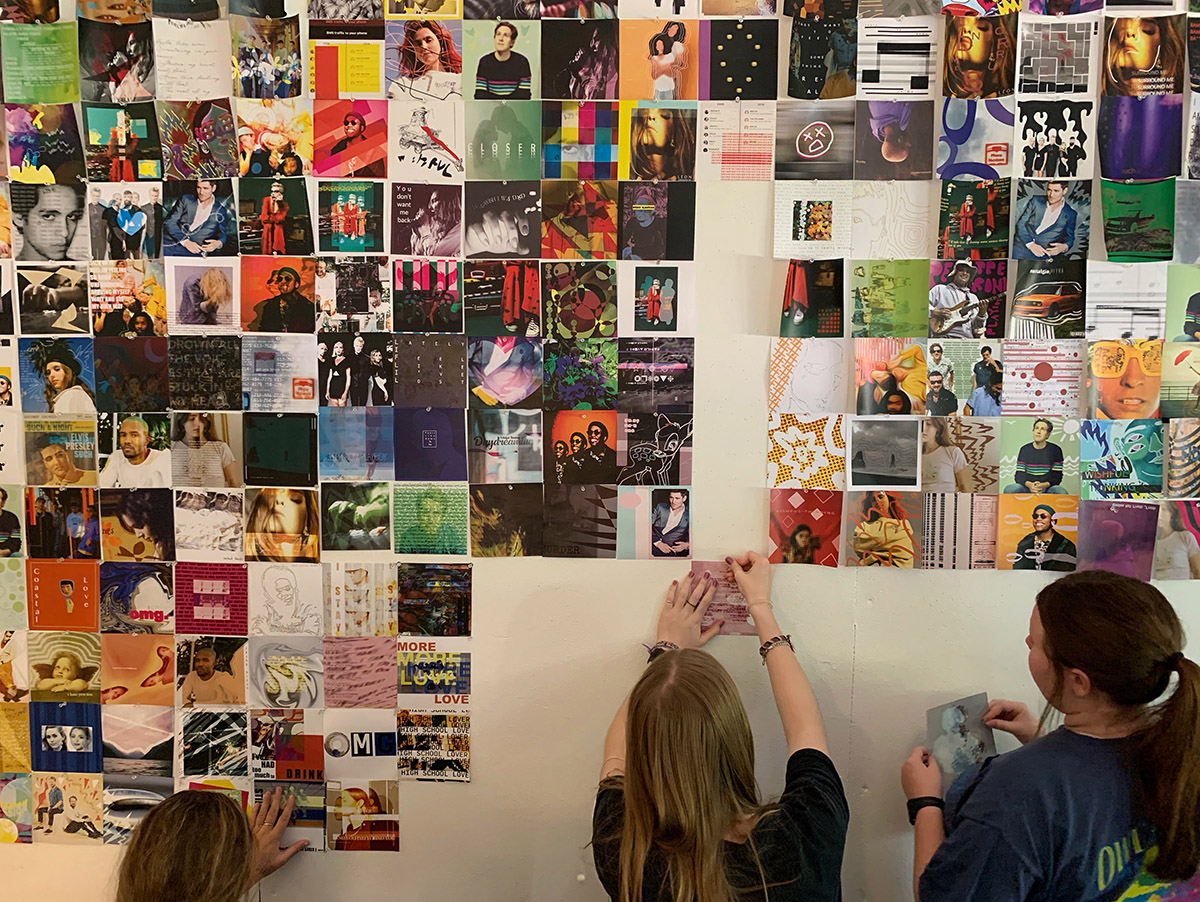Ryan Slone
Assistant Professor
University of Arkansas
Bree McMahon
Assistant Professor
University of Arkansas
As design educators, we feel it is imperative to prepare students for the wicked problems of the 21st century. Design Futures, the briefing papers released by AIGA in 2018, anticipates a complex future where design solutions must be increasingly open-ended to accommodate many layers of uncertainty. To model such unpredictable constraints, we developed the Mash Maker project, a design charrette that explores the collision of time and form through a system of carefully devised prompts. The conditions encouraged first-year design students to utilize improvisation methods, iteration, and collaboration while underscoring the value of process over outcome.
Music provided a logical framework for exploring this relationship, specifically hip-hop, using time-based characteristics to structure sound (Caswell). In many ways, a beat mimics “the grid,” a principle of design. For example, students designed songs in real-time using specific visual and typographic prompts. By designing and listening in tandem, students connected the auditory to the visual in a pro-process experience that often led to uncertain territory.
The outcomes of this project revealed to students the value of improvisation, conceptual design, and tackling wicked problems. Students learned to avoid fixation, something designers — especially novices — often struggle to overcome (Cross 2010). In learning principles of improvisation, students experienced their potential to “increase creativity by encouraging positive evaluation of deviant ideas” (Kleinmintz, Goldstein, Abecasis, Shamay-Tsoory, 2014). Moreover, in fostering community, they built a studio culture of solidarity, collaboration, and participation.
